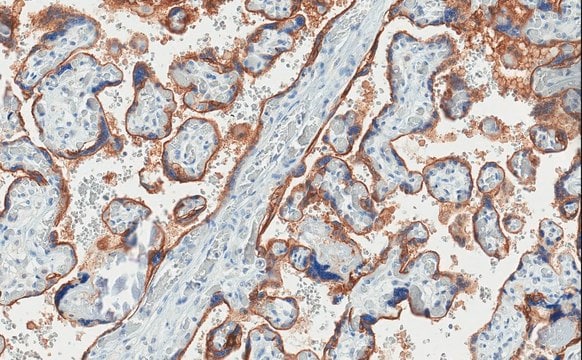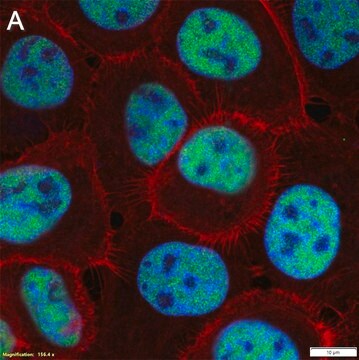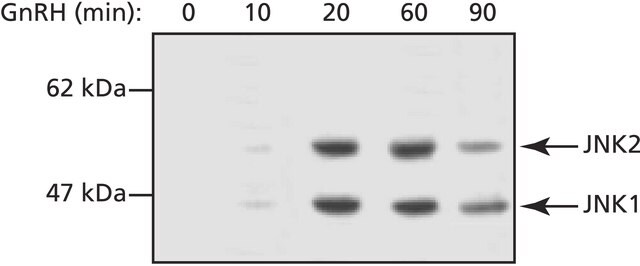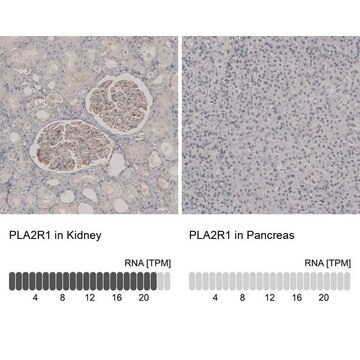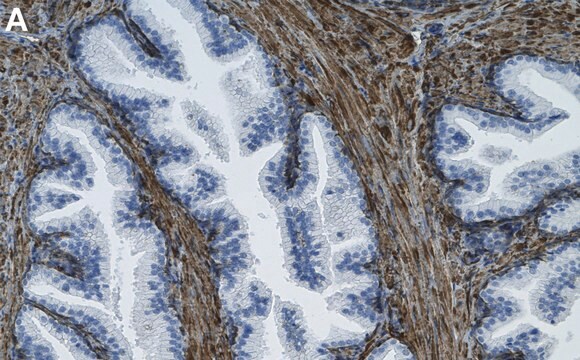ZRB1838
Anti-Phospho-EGFR (Tyr1068) Antibody, clone 3F4 ZooMAb® Rabbit Monoclonal

recombinant, expressed in HEK 293 cells
Sinonimo/i:
EC:2.7.10.1, Epidermal growth factor receptor, Proto-oncogene c-ErbB-1, Receptor tyrosine-protein kinase erbB-1
About This Item
Prodotti consigliati
Origine biologica
rabbit
Livello qualitativo
Ricombinante
expressed in HEK 293 cells
Coniugato
unconjugated
Forma dell’anticorpo
purified antibody
Tipo di anticorpo
primary antibodies
Clone
3F4, recombinant monoclonal
Descrizione
3F4 Clone
Nome Commerciale
ZooMAb® learn more
Stato
lyophilized
PM
calculated mol wt 134.28 kDa
observed mol wt ~160 kDa
Purificato mediante
using Protein A
Reattività contro le specie
human
Reattività contro le specie (prevista in base all’omologia)
monkey
Confezionamento
antibody small pack of 25 μL
Caratteristiche più verdi
Waste Prevention
Designing Safer Chemicals
Design for Energy Efficiency
Learn more about the Principles of Green Chemistry.
Convalida avanzata
recombinant expression
Learn more about Antibody Enhanced Validation
tecniche
affinity binding assay: suitable
flow cytometry: suitable
immunocytochemistry: suitable
immunohistochemistry: suitable
western blot: suitable
Isotipo
IgG
Sequenza dell’epitopo
C-terminal
N° accesso ID proteina
N° accesso UniProt
Categoria alternativa più verde
Condizioni di spedizione
ambient
Temperatura di conservazione
2-8°C
Informazioni sul gene
human ... EGFR(1956)
Descrizione generale
Specificità
Immunogeno
Applicazioni
Evaluated by Western Blotting in lysate from A431 cells treated with EGF.
Western Blotting Analysis (WB): A 1:10,000 dilution of this antibody detected EGFR phosphorylated on Tyrosine 1068 in lysate from over-night serum starved A431 cells treated with EGF (50 ng/mL; 10 min.).
Tested Applications
Western Blotting Analysis: A 1:10,000 dilution from a representative lot detected Phospho-EGFR (Tyr1068) in lysate from HeLa cells overnight serum starved and treated with EGF ( (50 ng/mL; 10 min.).
Affinity Binding Assay: A representative lot of this antibody bound Phospho-EGF Receptor-(Tyr1068) peptide with a KD of 1.1 x 10-6 in an affinity binding assay.
Flow Cytometry Analysis: 1 µg from a representative lot detected Phospho-EGFR (Tyr1068) in one million A431 cells treated with EGF (100 ng/mL; 15 min.).
Immunohistochemistry (Paraffin) Analysis: A 1:100 dilution from a representative lot detected Phospho-EGFR (Tyr1068) in human cervical cancer tissue sections.
Immunocytochemistry Analysis: A 1:100 dilution from a representative lot detected Phospho-EGFR (Tyr1068) in A431 cells treated with EGF (200 ng/mL; 10 min.).
Peptide Inhibition Assay: Target band detection in a lysate from A431 cells treated with EGF (50 ng/mL; 10 min) was prevented by preblocking of a representative lot with the immunogen phosphopeptide, but not the corresponding non-phosphopeptide.
Note: Actual optimal working dilutions must be determined by end user as specimens, and experimental conditions may vary with the end user.
Descrizione del bersaglio
Stato fisico
Stoccaggio e stabilità
Altre note
Note legali
Esclusione di responsabilità
Non trovi il prodotto giusto?
Prova il nostro Motore di ricerca dei prodotti.
Codice della classe di stoccaggio
11 - Combustible Solids
Classe di pericolosità dell'acqua (WGK)
WGK 1
Punto d’infiammabilità (°F)
Not applicable
Punto d’infiammabilità (°C)
Not applicable
Scegli una delle versioni più recenti:
Certificati d'analisi (COA)
It looks like we've run into a problem, but you can still download Certificates of Analysis from our Documenti section.
Se ti serve aiuto, non esitare a contattarci Servizio Clienti
Possiedi già questo prodotto?
I documenti relativi ai prodotti acquistati recentemente sono disponibili nell’Archivio dei documenti.
Il team dei nostri ricercatori vanta grande esperienza in tutte le aree della ricerca quali Life Science, scienza dei materiali, sintesi chimica, cromatografia, discipline analitiche, ecc..
Contatta l'Assistenza Tecnica.
